The findings could inspire engineers to create more efficient filtration systems to fight pollution or toxic algae.
(text and background only visible when logged in)
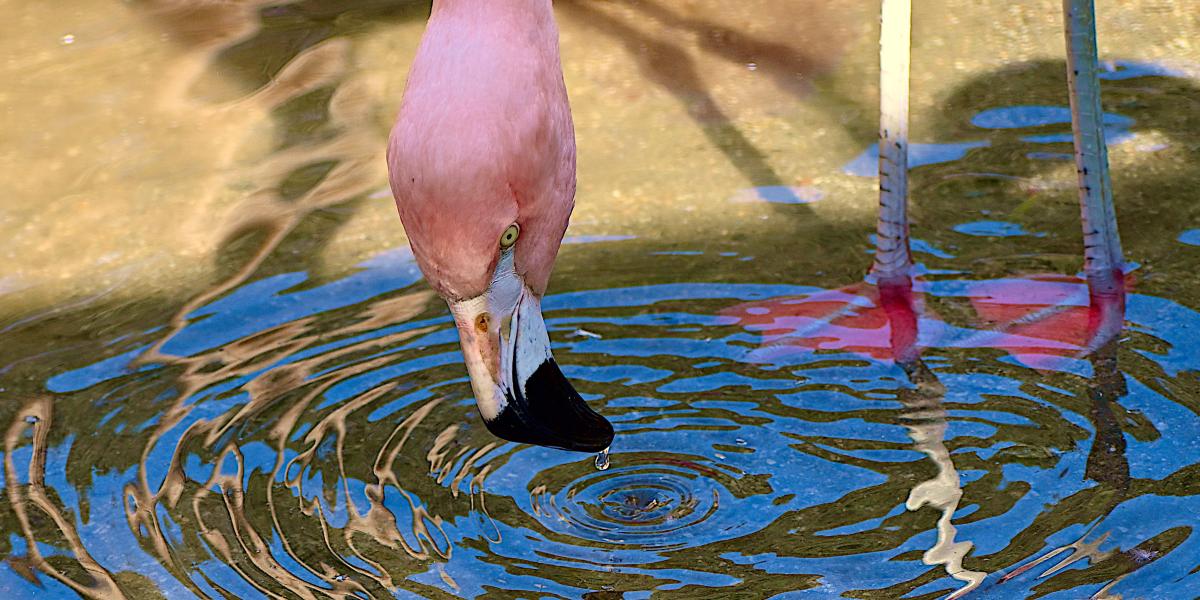
A new study that better understands how a flamingo uses its mouth and stomps its feet while eating could lead to better water filtration systems.
The study found that the long-legged birds create mini tornadoes while eating upside down. Flamingos do it by chomping their mandibles, bobbing their head up and down, and marching back and forth to push water into their mouth.
The bird is able to pick out its prey in the swirling vortices, even if the water is muddy or dirty.
Georgia Tech researchers partnered on the project with the University of California Berkeley, Kennesaw State, and the Nashville Zoo.
“Flamingos are more than passive filter feeders — they’re active hunters,” said Saad Bhamla, an associate professor in Georgia Tech’s School of Chemical and Biomolecular Engineering. “They create swirling vortices with their beaks and stomp out whirlpools with their feet to trap prey, all while feeding upside down with their beaks pointed backward.”
To test how quickly and efficiently the birds collect their food, the researchers built a 3D printed flamingo mouth with mechanical mandibles. They mimicked water inflow generated by the animal’s tongue with a pump, measuring the number of brine shrimp collected.
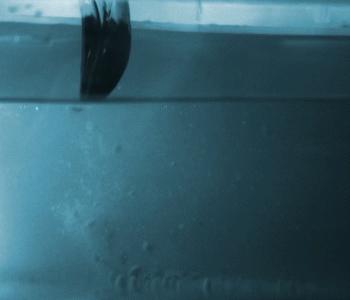
“Beak chattering increased the collection rate sevenfold compared to trials when we only used the pump. The mechanism caught 10 more shrimp per second,” Bhamla said. “We’re now exploring how these hydrodynamic principles could be applied to cleaning up fouling in membrane filtration, an ongoing challenge in chemical engineering.”
The work was led by Victor Ortega-Jiménez, a former research scientist in Bhamla’s lab, who is now an assistant professor at the University of California Berkeley. The team also included Georgia Tech’s Pankaj Rohilla and Benjamin Seleb, as well as Tien Yee from Kennesaw State University.
The team was rounded out by Nashville Zoo zookeeper Jake Belair and Marty and Mattie, a pair of Chilean flamingos who were trained to feed from an aquarium for several weeks as part of the study.
(text and background only visible when logged in)
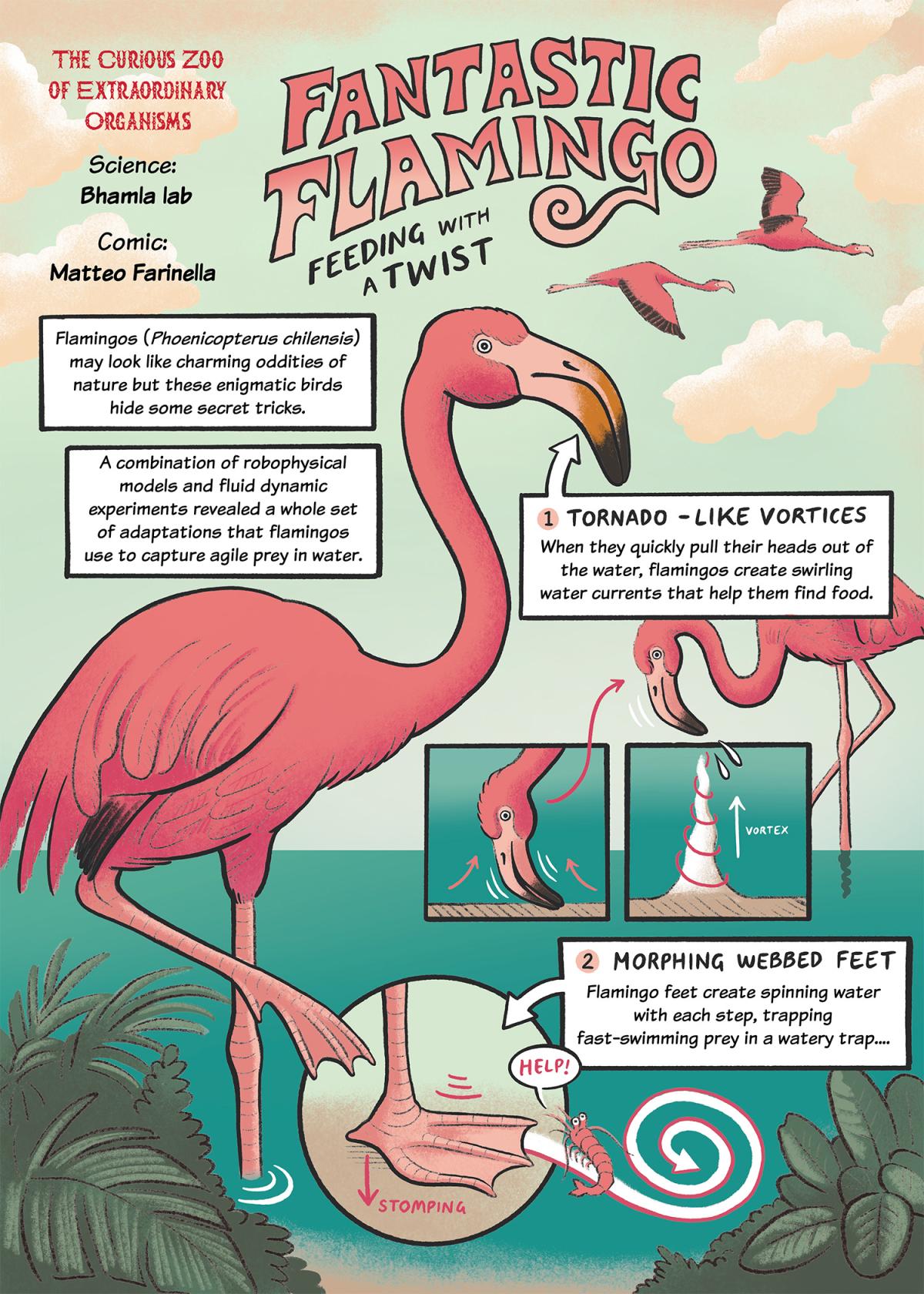
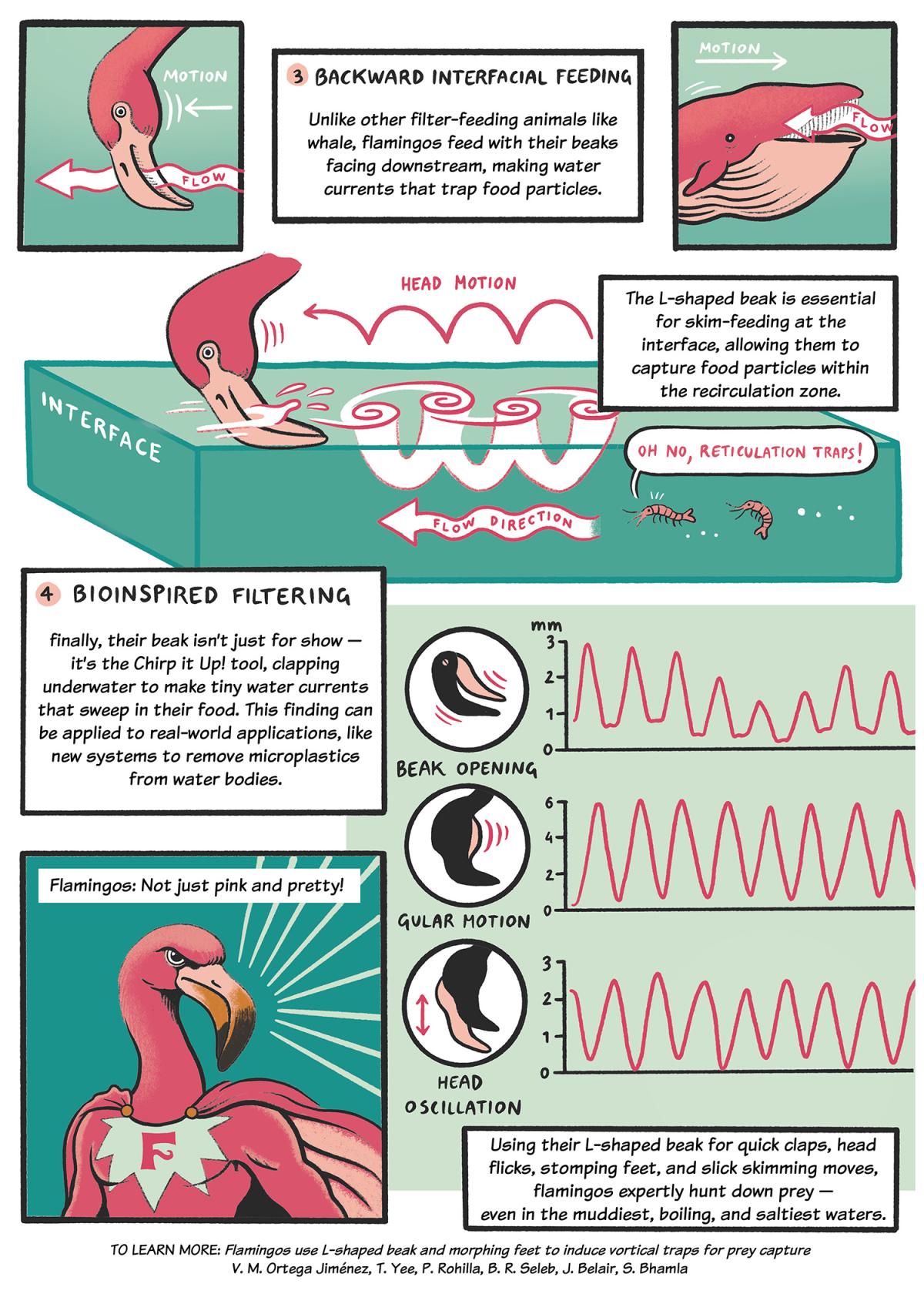
About the Research
CITATION: Ortega-Jimenez V, Yee T, Rohilla P, Belair J, and Bhamla S, Flamingos use their L-shaped beak and morphing feet to induce vortical traps for prey capture, Proceedings of the National Academy of Sciences, 2025, Vol. 122 | No. 21 https://www.pnas.org/doi/10.1073/pnas.2503495122.

Preeminence in Research
Related Content
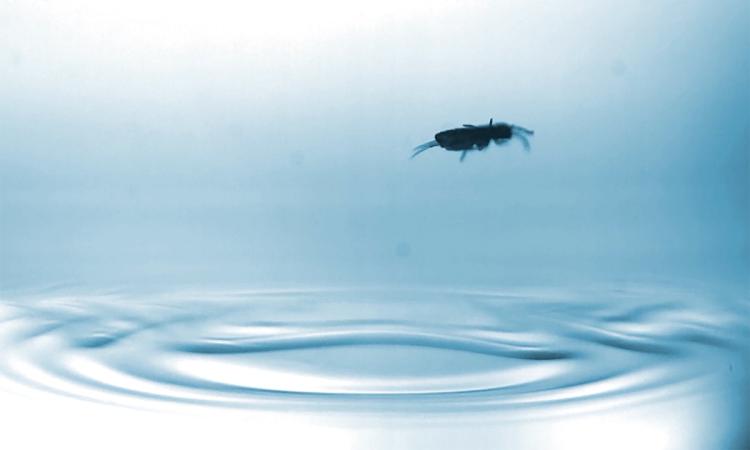
The Secret to the Skillful Skydiving of Wingless Springtails
Georgia Tech researchers discover how this tiny hexapod survives predators with controlled jumps, aerial control, and stuck landings on the water's surface.
Georgia Tech researchers discover how this tiny hexapod survives predators with controlled jumps, aerial control, and stuck landings on the water's surface.
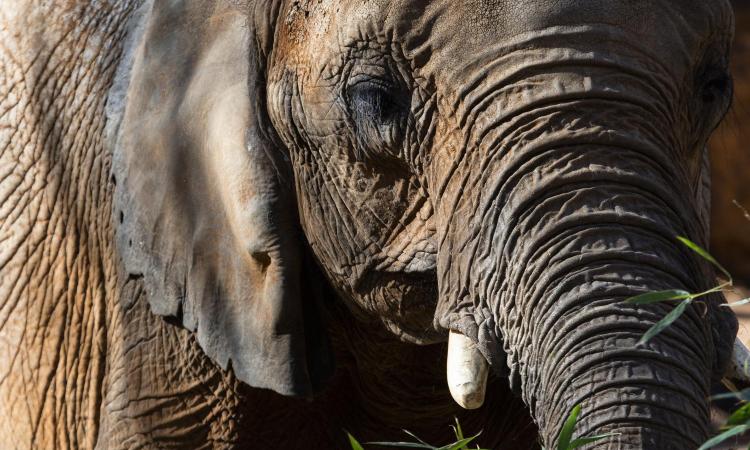
Skin: An Additional Tool for the Versatile Elephant Trunk
Elephant biomechanics suggests a new approach for soft robotics
Elephant biomechanics suggests a new approach for soft robotics

Rule the Pool This Summer and Make the Biggest Splash
Georgia Tech roboticists explain the physics of epic pool jumps and the New Zealanders who have mastered them.
Georgia Tech roboticists explain the physics of epic pool jumps and the New Zealanders who have mastered them.